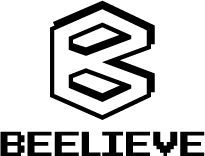When you think of the design process for a website or application, you usually imagine the intricate coding and digital interfaces that are required to bring those designs to life.
However, most designs begin on a simple way.
Product teams frequently utilize terminology like wireframe, mockup, and prototype. Each one is used to demonstrate concepts, collect feedback, and develop consensus so that teams can design and build exactly what customers want. Those terms may seem similar but they all have unique role during product development lifecycle.
What is Wireframe?
Basically, wireframe serves as the framework of the design. It is black and white illustrations that mostly rely on grey boxes and text to convey the appearance of a product. Wireframe is often used in brainstorm session because they are low fidelity and quick to create. The process of creation can be carried out on paper and pencil, on a whiteboard, or in a product management tools such as Balsamiq or Figma. Although there are no colors and specific details, wireframe is still arguably the most important step because it clearly shows the flow of users and groups of information on the design board.

What is Mockup?
Mockup enhances wireframe by including design components like color schemes, fonts, icons, and navigational features. Multiple models are frequently built to provide the decision maker with a variety of evaluation alternatives. To make the projected image more realistic of the final product, actual content is frequently inserted. Actual content is normally placed in shown images to make them more indicative of the final product. Modeling requires more effort and skill. In other words, Mockup is wireframe, but full with information and shows more details.

What is Prototype?
Where usability testing and user input sessions are required, prototypes are produced. While the prototype will resemble a mockup, the interactive parts (scroll up and down, effectives etc) will be implemented using UX tools rather than actual code. As such, the prototype will be incomplete, but the elements will be interactive enough to validate the main concepts. After the testing phase is complete and any applicable feedback is incorporated, the prototype is passed to the development team for execution. Because of its complicated, more time invested will be required than the previous steps.
In summary, Wireframes, mockups, and prototypes help teams understand what customers truly need, allowing them to design a product that users love.






